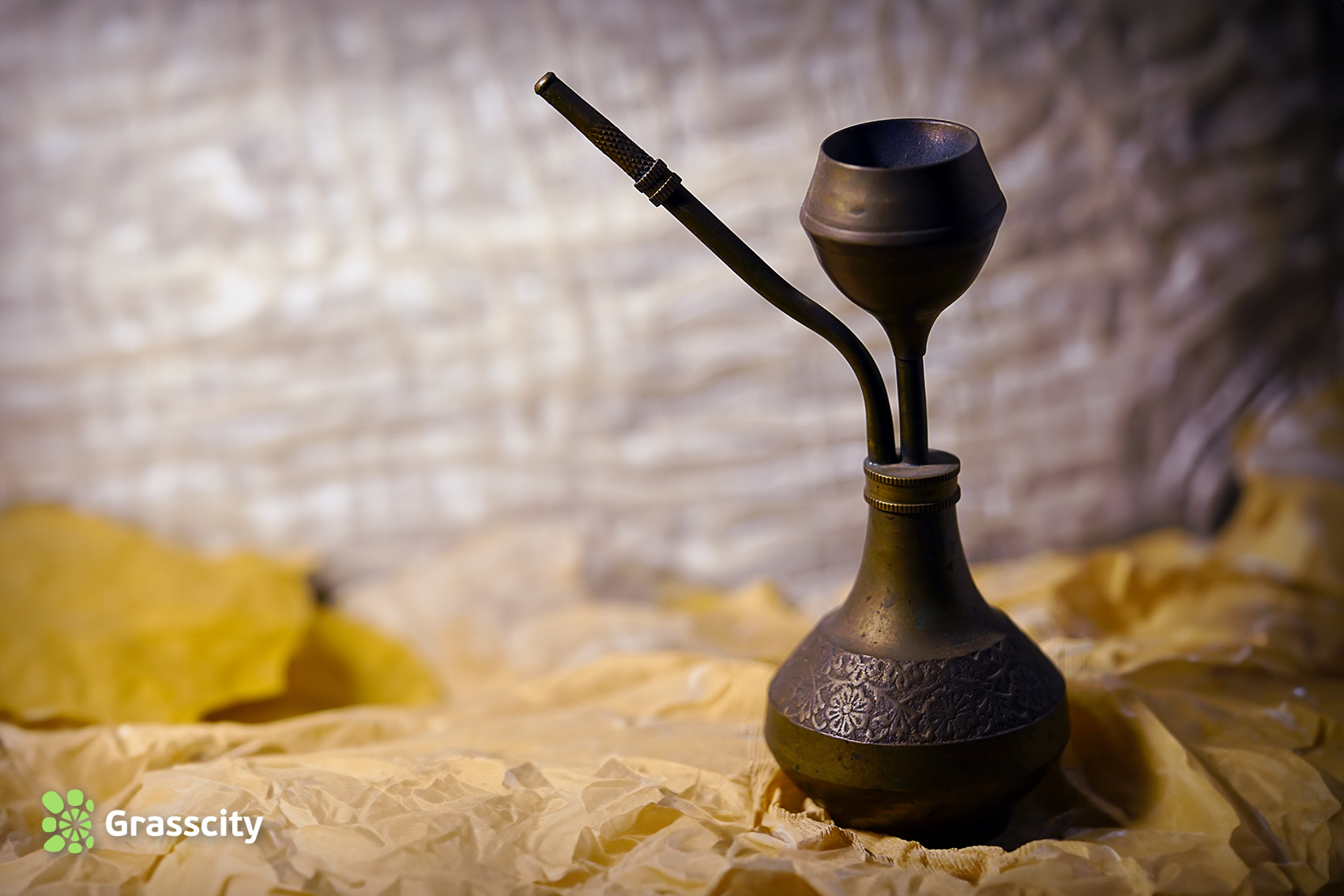
Who Invented the Bong?
A bong is to a cannabis enthusiast one of the most integral parts of smoking. Believe it or not, bongs have a long and rich history dating back to thousands of years ago, and it has come a long way through the years.
From a traditional smoking device to being a ubiquitous paraphernalia, the use of bongs skyrocketed after the cannabis boom in the 1960s. In this blog post, we’ll look at the history of bongs, who invented the bong, its use in different cultures, its evolution, and future trends.
The Science and Function of Bongs
Before we get to know more about bong, let’s learn about the science behind a bong and why it makes your smoking experience better. The first thing you should take notice of is the bowl where you’ll put your ground weed, and you’ll also see that there’s water at the bottom of the bong. Once you light up your weed, it will combust, and you can inhale the smoke through the pipe.
Bongs are specifically designed to have a chamber so that the smoke bubbles and diffuses through the water. As you inhale, the water will bubble, filtering and cooling the smoke before it reaches your mouth.
This filtration gets rid of the smoke’s heat and harshness, leaving a cooler and smoother toke. Bongs also gather a ton of smoke in the chamber, which gives you a bigger hit. If you’re interested, you can learn how to smoke a bong properly to take full advantage and have the best smoking experience.
Early Origins And History Of The Bong
The earliest bong ever used was discovered back in 2013, when a Russian archaeologist Andrei Belinski excavated an area in the Caucasus Mountains of Southern Russia. The ornate objects were accidentally discovered during a power-line project and archaeologists dug through the ancient burial site or the kurgan called the Sengileevskoe-2.
Belinski and team found gold buckets filled with three cups, rings, and bracelets from about 2,400 years ago. They also found black residue inside the vessels, which was found to contain traces of opium and cannabis.
The ornaments were possibly owned by the Scythians, nomads with cannabis-fueled rituals dating back from 400 BC. These warriors ruled Eastern Europe through Central Asia from the 19th century BC to the 4th century AD. It’s said that Scythians used to smoke opium and cannabis before they went into battle to alter their minds.
This was mentioned by the famous Greek historian Herodotus “Scythians used a plant to produce smoke that no Grecian vapor-bath surpassed which made them shout aloud”. The discovery was kept a secret for fear of looting by criminals, but all these valuable items are now on display in a Russian museum.
The Etymology of 'Bong'
Why is it called a “bong”? The term originated from the Thai word “baung” which means “cylindrical wooden tube”. Baung is made from a segment of bamboo that Thai people use for smoking. The term became popular in American culture when Vietnam War veterans brought it over to the US in the 1960s.
Bongs in Different Cultures
Ancient bongs have been used in different cultures throughout time, including Central Asia, India, and China. As mentioned, the earliest known bongs were the ones used by the Scythians who resided in Central Asia, marking the first evidence of bong usage.
It was also used by ancient Chinese. Similar to the discovery in Central Asia, bongs were found in the tombs of the dead. They’re made from bronze, silver, and ceramic, currently displayed at the Palace Museum in China. The Silk Road, which is a network of routes that connects China to the Middle East, helped the spread of bong use to other regions of the world.
In colonial India, a similar water pipe called the hookah was used and readily adopted by the British by the 18th century. The origin is still debatable, but according to the legend, the device was invented in the 1600s by the emperor's physician to filter tobacco smoke.
Evolution of Bong Designs
The earliest bongs were made out of bamboo, gourd, and natural elements, as evidenced by the ones found in Asia. The traditional bong was then revolutionized by Bob Snodgrass in the 1960s, and he is considered the inventor of modern-day glass bongs. A glass artist who designed the first bong made out of borosilicate glass, he created a smoking device that’s aesthetic, functional, and durable.
Snodgrass popularized the use of bong in America and started a shift in bong innovation. Bongs are now not just for smoking, but also beautiful art pieces with intricate designs. Innovators also created new ways to make the smoking experience smoother and better, such as adding percolators and ice catchers.
There are also acrylic bongs that are more durable, bubblers, dab rigs for concentrates, glass pipes, and electronic vaporizers that offer different ways for you to enjoy smoking cannabis.
Legal Challenges and Cultural Shifts
Due to its popularity, the US government decided to crack down on drug paraphernalia in the early 2000s. The 2003 Federal Drug Paraphernalia Statute stated that “the sale or importation of water pipes, bongs, marijuana pipes, cocaine freebase kits, and crack pipes” are prohibited. Distributors and manufacturers are faced with three years in prison and forfeiture of their property if proven guilty.
Currently, there’s a cultural shift toward cannabis smoking. As its benefits are becoming more well-known, marijuana is now legal to some degree in several states. The Colorado Constitution states that the possession, use, display, purchase, or transportation of marijuana accessories is not prohibited. Similar regulation is also found in Michigan’s Medical Marijuana Act.
The Future of Bongs
People are becoming more accepting of marijuana use, creating significant growth in the global smoking pipe market that encourages innovation in bong design and technology. Innovators are always improving the smoking experience, by adding more features or changing its shapes and design for a smoother hit.
Its mainstream acceptance also creates a new market - portable mini bongs that you can bring along with you when you travel. These bongs are usually made out of lighter material with smaller sizes that can fit easily inside your purse or bag. There’s also a travel-friendly electronic bong that you can use without a torch.
Bongs in Modern Times
Bongs became popular in the Western world in the 1960s and 1970s, as it was synonymous with cannabis use. It’s depicted as the ultimate tool for getting high, showcasing a sense of adventure in the flower power era. It still holds its place in the modern era, as it has more personality than a simple pipe or edibles.
You can now access more variety of bongs through different channels as it’s now available online, in headshops, and around the world. From the humble beaker bongs to acrylic bongs and mini bongs, smokers everywhere are spoiled for choice.
Conclusion
Bongs have gone a long way from their early days. Initially, bongs are simple filtration devices people use to smoke. It’s now becoming more advanced, with new features and characteristics that allow you to personalize your smoking experience.
There’s no doubt bongs have a historical and cultural significance all around the world. Immerse yourself by exploring our bongs for sale online at GrassCity, and be a part of that history!
FAQ Section
Who really invented the bong?
The earliest bongs were made by the Scythians, but the person who invented the modern bong was Bob Snodgrass. It all started in the 1960s when Snodgrass tried glassblowing. He was introduced to cannabis and combined the two to create the first glass bongs.
How old is the oldest bong discovered?
The oldest bong discovered was 2,400 years old. It was discovered by Andrei Belinski in the Caucasus Mountains of Southern Russia. The remains were found in a Scythian burial ground or kurgan along with other artifacts.
What were the earliest bongs made from?
The earliest bongs were made from solid gold. They were likely used for smoking opium and cannabis by the Scythians before they went into battle to alter their minds.
How did the word 'bong' enter American culture?
The term bong comes from the Thai word “Baung” which entered American culture when the Vietnam War veterans brought some back home after the war. “Baung '' itself means cylindrical bamboo tube. Thai people used these bamboo bongs for smoking weed.
